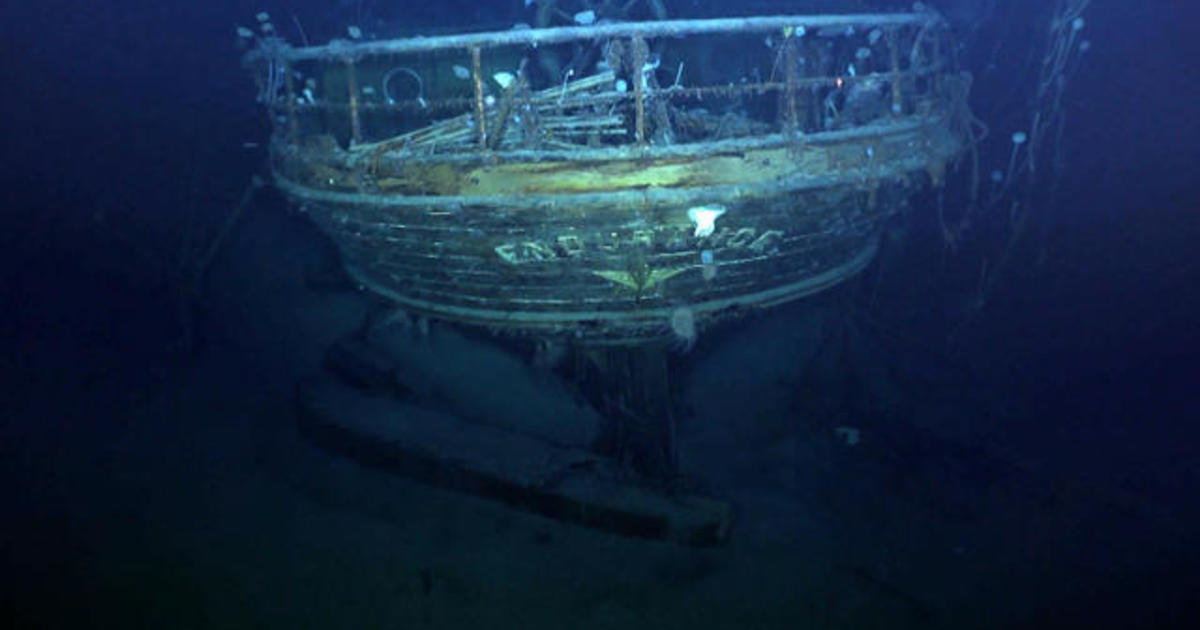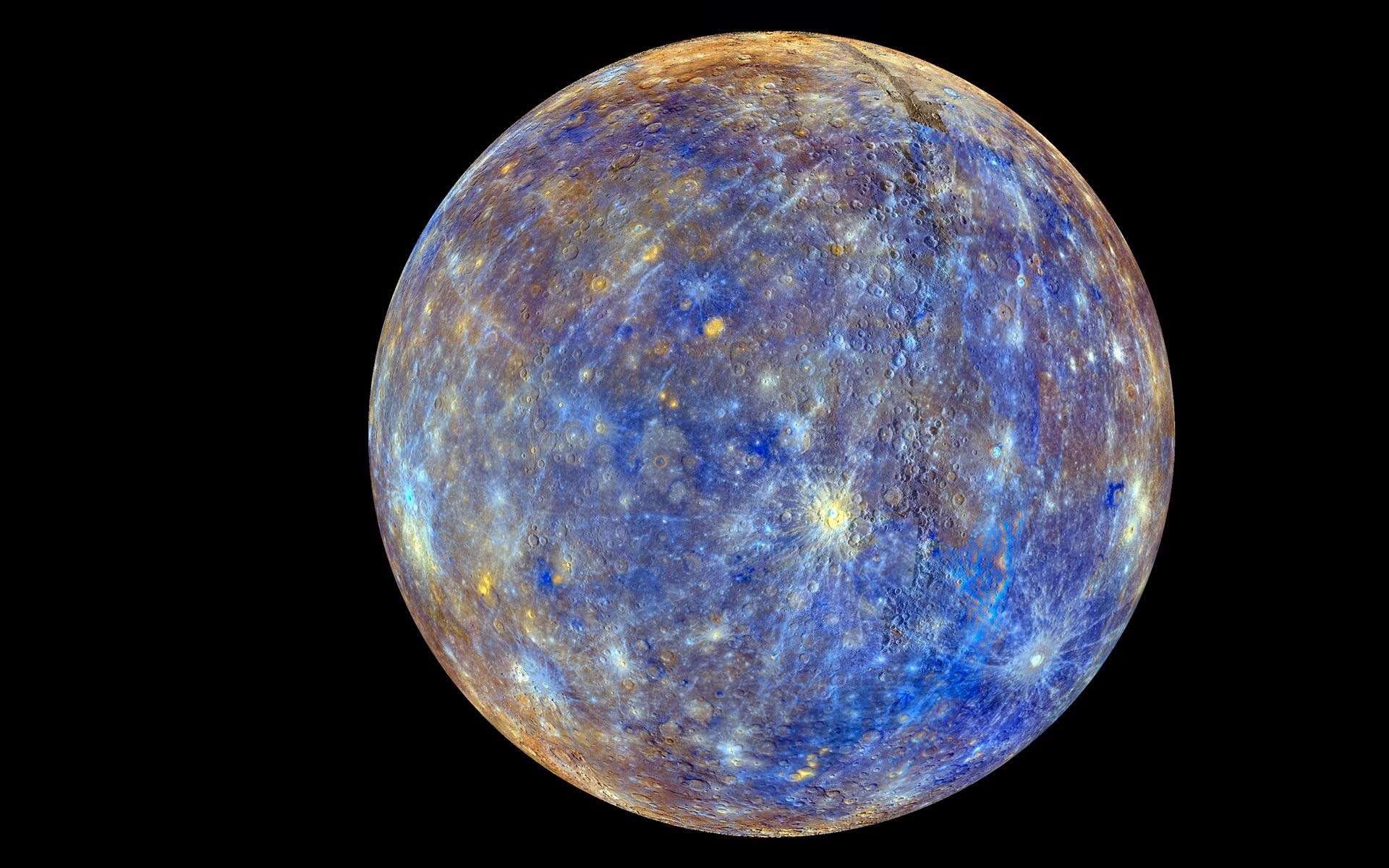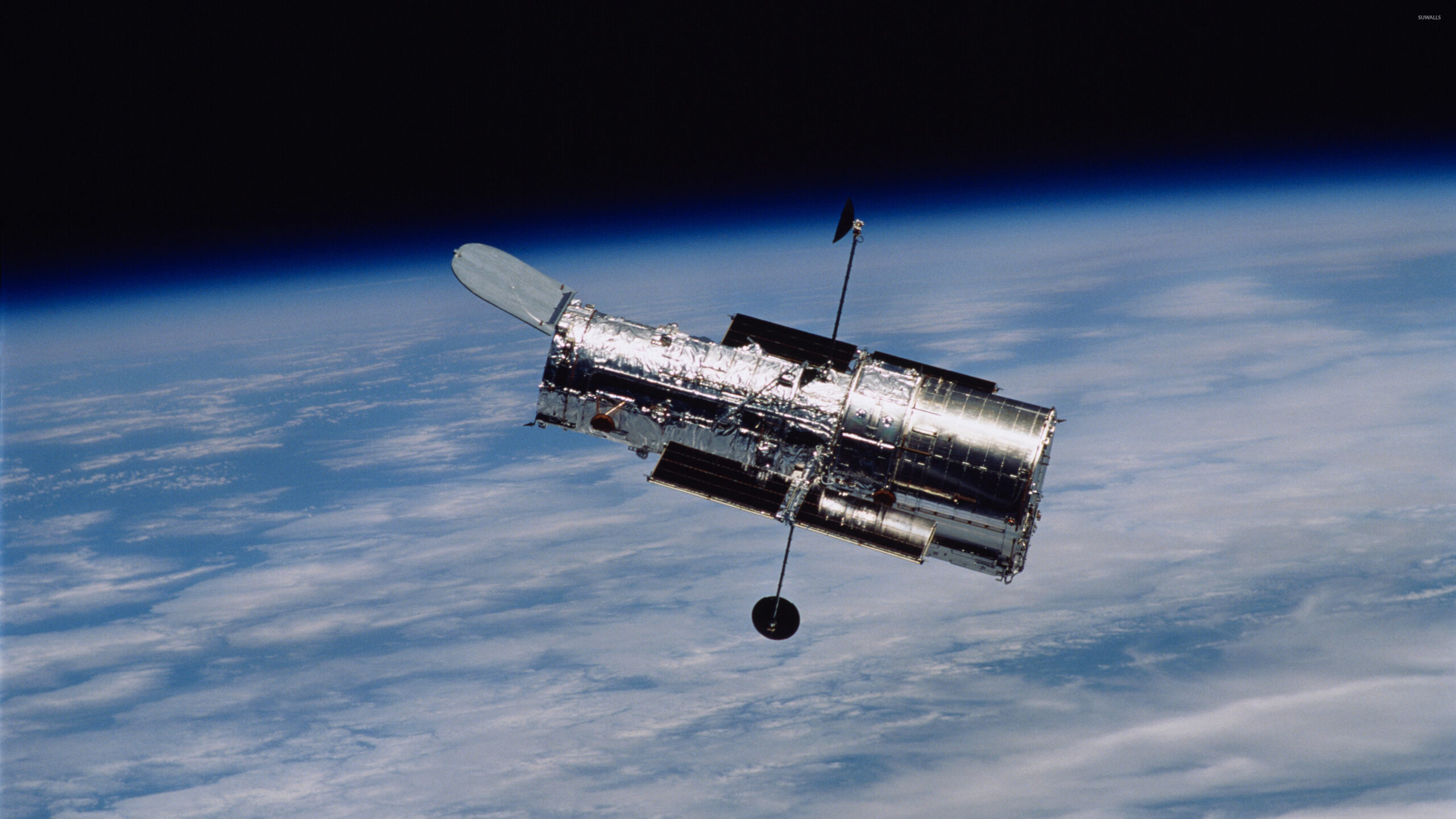Every day, the planet continues to rotate, circling our parent star and gently spinning around the center of our galaxy in accordance with the rules of physics. These laws were not always well known. In fact, they’re essentially breaking news in the broad picture of the human enterprise. That is the advantage of science, it’s amazing potential to enlighten and modify the world around us.
While most of us go about our regular lives, science continues to work on discovering new information, making new discoveries, and breaking new ground. Every day, scientists and researchers in labs and field locations throughout the globe chisel away at the knowledge vacuum that we come into this world with.
We couldn’t possibly report on every discovery, innovation, or invention produced in a single day, much alone a month, but that shouldn’t stop us from trying. Science is most effective when it is understood or at the very least acknowledged. To that purpose, here are twelve of the most fascinating scientific discoveries made in March 2022.
1. Is Stonehenge used as a solar calendar?

For decades, Stonehenge has been a source of mystery and wonder, with several interpretations for how it was built and what it was used for. According to a new study, we may finally have an answer. Professor Timothy Darvill, an archaeologist at Bournemouth University, believes Stonehenge functioned as a solar calendar, with different areas of the monument equating to different days or weeks.
The ancient calendar is arranged significantly differently from what we are used to now. Each stone symbolizes a single day in a month and is divided into three weeks of 10 days each. That basic system worked for day-to-day monitoring, but they had to make some tweaks to align it with the Sun’s motions.
A short extra “month” of barely five days was added, as well as stones to monitor an extra day every four years to accommodate for leap year. As a consequence, the winter and summer solstices are always framed by the same pair of stones. This would have provided neolithic Europeans with a solid frame of reference for correcting any inaccuracies in day-tracking throughout the year.
2. A 100-year-old wreckage was discovered by underwater robots

The ship Endurance was on an expedition across Antarctica in 1915 when it went missing in the Weddell Sea. Fortunately, the whole crew of 28 persons escaped the catastrophe. Despite knowing roughly where the ship went down, it remained undiscovered for more than a century, until recently.
Finding the ship was a huge problem, because to the less-than-ideal circumstances in Antarctic seas. Sea ice covers enormous swaths of the freezing ocean waters, prohibiting investigators from using traditional investigative techniques. It seems that discovering the buried remnants of the Endurance had to wait for technology to catch up.
The Endurance22 salvage expedition rode out on the S.A. Agulhass II to a location where they believed they may discover the ship. When they arrived, they launched autonomous underwater robots known as Sabertooths, which probed the ocean bottom with a laser scanner and sonar, as well as cameras to photograph everything they saw. And discover something they did. When the disaster was discovered, the Sabertooths utilized their scanning devices to create a 3D reconstruction of the ship and the surrounding wreckage.
3. Artemis is getting closer to its debut

In the late 1960s and early 1970s, the Apollo missions were the first to send humans to the lunar surface, ushering in the most acclaimed period of human spaceflight. The last time humanity stepped on another planet was 50 years ago in December of 2022, and NASA has set its sights on returning.
The Artemis missions, named after Apollo’s twin sister in Greek mythology, were originally scheduled to return boots to the Moon’s surface by 2024, but that deadline has since been pushed back. Nonetheless, the program is progressing, with the first mission on the horizon.
Artemis I, an unmanned test mission, will launch NASA’s new Space Launch System around the Moon with the Orion spacecraft (SLS). Before the ship goes home, the mission will last four to six weeks. The major goals are to test the launch system and spacecraft, as well as to ensure a safe re-entry and splashdown (per NASA). The launch date has been set for mid-2022.
NASA published a one-minute movie to commemorate the forthcoming mission, assuring that Artemis will be at the launchpad shortly. NASA fulfilled their commitment on March 17, 2022. The SLS was installed on the Crawler-Transporter 2 (CT-2) and moved slowly — less than one mile per hour — from the Vehicle Assembly Building to its launch location on Kennedy Space Center’s Launch Pad 39B.
4. The surface of Mercury is coated with diamond particles

Mercury used to be a far more dangerous place to be. It’s still not optimal, with severe temperature differences between its day and night sides. While we wouldn’t want to live there, it may be fun to go treasure hunting there.
Recent models of Mercury’s surface and impact interactions over the past four billion years have indicated that the planet’s surface may be encrusted with minuscule diamonds, as Kevin Cannon discussed at the 53rd Lunar and Planetary Science Conference.
Mercury was covered in a worldwide magma ocean during its early development. Graphite developed inside the magma and ascended to the top, forming a floating graphite crust hundreds of meters thick. The first billion years following the birth of the solar system were littered with asteroid collisions, any of which might have quickly transformed that graphite into diamond.
These would not be the huge, clear jewels we’re used to seeing in jewelry, unlike diamonds on Earth. Instead, minuscule diamond dust would have been strewn throughout the surface. Future missions to the planet might provide further information about the planet’s surface composition, but if these estimations are true, Mercury could be home to a diamond horde sixteen times the size of Earth’s.
5. Two hours before impact, an asteroid was spotted

In terms of asteroid collisions, one occurred on March 11, 2022. Fortunately for all of us, it wasn’t a planet-killing object like the ones that appear in movie plots and massacre dinosaurs. 2020 EB5 had a diameter of around 6.5 feet and burnt up in the atmosphere near the coast of Greenland.
The 2020 EB5 impactor is just the seventh time astronomers have spotted an impactor before it collides with Earth. Objects of that size aren’t uncommon in the solar system, and they pass close to our planet on a regular basis. Because the search area spans indefinitely in every direction and they are fairly dim, their modest size makes them very difficult to discover in advance.
Larger objects colliding with the Earth might have catastrophic effects for mankind and the rest of life on the planet, thus NASA takes the task of discovering and monitoring them extremely seriously. The Center for Near Earth Object Studies at NASA’s Jet Propulsion Laboratory is in charge of monitoring the sky for potential interplanetary hazards, and it was engaged in following 2020 EB5 after its detection by astronomers at the Piszkéstet Observatory. Let’s hope we get more than two hours’ notice if anything bigger comes our way.
6. Worms that smell out cancer

Detecting disorders such as cancer is often crucial for a positive prognosis. Cancers, in particular, have much increased survival chances if diagnosed early, thus physicians and scientists are always exploring for new screening procedures. A little piece of plastic loaded with worms is the most recent addition to the diagnostician’s toolbox. The nematode C. elegans, in particular.
Medical technology, diagnosis, and treatment have advanced dramatically in recent decades, yet, as with most things, nature can do better. Nematodes are very basic organisms, so much so that they are a popular model organism for various types of study, yet they have a sophisticated sense of smell that they utilize to traverse the environment. That sense of smell seems to be fine-tuned for detecting specific forms of cancer.
The worms were put to work identifying cultivated lung cancer cells by researchers from the National Research Foundation of Korea. Their “worm-on-a-chip” technology is made out of a tiny rectangular piece of elastomer with a chamber cut out of its inside. The worms are put in the center and may move down one of two directions. On one end, there are healthy cells, and on the other, there are malignant cells. The worms effectively travelled toward the malignant sample 70% of the time, according to the researchers.
More study is required, but the worm-on-a-chip might one day deliver quick and accurate preliminary diagnostics.
7. Exoplanet research has reached a significant milestone

The hunt for planets outside our solar system is a relatively young trend in astronomy. In reality, the first verified exoplanet was identified only in 1992. Despite the fact that exoplanet discovery is still in its infancy, the field has developed significantly.
Telescopes such as Hubble, TRAPPIST, and, most recently, the JWST have enabled humankind to see deeper into our cosmos and farther back in time than ever before. With robust tools and continually improved detection techniques and processes, the number of verified exoplanets has rapidly increased to the point where planets are now added to the register in batches rather than individually.
NASA received the most recent batch of verified planets on March 21, 2022. Confirmation usually requires several observations to assure there was no abnormality or experimental mistake. The batch included 65 new worlds, bringing the total number of exoplanets to over 5,000.
A substantial proportion of the exoplanets identified to date are hot Jupiters, which are gas giants circling close to their parent star. However, this seems to be a result of our observing methods and is not necessarily typical of the most prevalent sorts of planets. We’ve also discovered super Earths and mini-Neptunes, among other unusual planetary kinds. At our present pace, we’ll be at 10,000 planets before we realize it.
8. Gravitational waves might be detected by the Moon

Albert Einstein proposed gravitational waves as part of his general theory of relativity, but they were not seen until 2015. Lasers are used by instruments such as the Laser Interferometer Gravity-Wave Observatory (LIGO) to detect gravitational waves emitted by intense cosmic events such as the merger of two black holes.
Interferometers operate by directing two lasers perpendicular to one other and detecting interference patterns in light waves as they bounce back and forth along their path. The pattern stays constant under normal conditions, but a change in the distance between two locations on the instrument creates changes in the wave patterns, which may be observed.
Physically interfering with the machine is one method to disrupt the patterns, but this doesn’t reveal anything about the nature of the cosmos. Another approach to adjust the distance is to physically extend or squeeze space-time, which is what occurs when gravitational waves pass through the devices.
Tools like LIGO, no matter how sophisticated they are, are restricted in terms of the frequencies they can detect, which is where the Moon comes in. Scientists have suggested converting the Moon-Earth system into a large interferometer by bouncing lasers off mirrors left on the lunar surface by Apollo astronauts, as stated in an article published in the journal Physical Review Letters.
Minor variations in the Moon’s orbit over time might show the existence of minute gravitational waves left over from the Big Bang.
9. A person with ALS uses a computer-brain interface to communicate

A computer-brain interface was recently employed by scientists to restore basic communication to an anonymous ALS patient who had lost full muscular control as a consequence of the condition.
Scientists and researchers have been working on a variety of technologies that employ a patient’s residual mental or physical talents to convert them into communication, providing a voice to those who have lost theirs. Stephen Hawking, a physicist who suffered from ALS, was able to twitch a muscle in his cheek just slightly and utilize that capacity to command a computer, compose phrases, and even write books. However, since many ALS patients do not maintain any muscular mobility, scientists sought to find another approach.
Electrode arrays were implanted in the patient’s brain, and the system was taught to distinguish activity in surrounding nerves, according to a report published in the journal Nature Communications. The patient used those nerves to operate a computer, purportedly by attempting to move his eye, in order to answer yes or no questions and slowly type out phrases.
The process was sluggish, averaging one character each minute, but he was able to make modest requests and convey sympathy for his family. There’s still a long way to go before these interfaces are generally accessible, but being able to tell your family you love them again is a clear victory.
10. Tomorrow’s Martian fuel is today’s astronaut waste

Getting something into space is both technologically difficult and prohibitively costly. Even with recent breakthroughs, such as reusable rocket boosters, each kilogram launched off planet costs thousands of dollars.
That’s why astronauts who go to the space station don’t bring a lot of water with them. The station is intended to collect, filter, and reuse virtually all of the water aboard. That is the mindset with which space agencies are approaching the next chapter of human space exploration. According to NASA, a Mars expedition may take around two years round way, and every kilogram of water or fuel carried in advance makes it more difficult to pull off.
To that aim, the European Space Agency (ESA) is collaborating with the technological company Tekniker on the development of a unique reactor for converting astronaut waste products into fuel. The technology would collect carbon dioxide from the Martian atmosphere and blend it with gray water – astronaut waste — to generate methane and other hydrocarbons.
Importantly, the device will also cleanse the water and return it to the astronauts, giving future space travelers a twofold return on their biological investment. Any crew travelling to Mars will need to send less water, and they’ll earn some extra fuel for their trouble.
11. Hubble looks farther back in time than ever before

The earliest star ever seen by the Hubble Space Telescope was glowing in the night sky around four billion years after the universe’s origin. At least, that was the case until March 2020, when the record was smashed thanks to Hubble’s remarkable technology and a helping hand from the cosmos.
According to NASA, Hubble focused its orbiting eye in the direction of WHL0137-08, a large galaxy cluster, and received more than it bargained for. Because the cluster is so massive and carries so much mass, it bends space and time around it, causing light to curve as if through a magnifying glass.
Astronomers refer to this phenomenon as gravitational lensing. Essentially, the lensing effect snatched a star that was, by all accounts, outside Hubble’s optical range and drew it several billion light-years closer. To be clear, the star, dubbed Earendel by astronomers, was not shifted and is most likely dead and gone, but its light is still rushing toward us, and by a fortuitous cosmic happenstance, we were able to see it.
The James Webb Space Telescope, which launched on Christmas Day 2021, has almost completed establishing itself at the L2 Lagrange point, and scientists aim to direct it toward the star to learn more about it.
12. Scientists Can Use a Nuclear Reactor to Catch and Study “Ghost Particles”

A nuclear reactor at an Illinois energy facility is aiding University of Chicago scientists in learning how to capture and interpret neutrinos, which are tiny, elusive particles. The neutrinos from the Dresden Generating Station in Morris, Illinois, owned by Constellation (formerly Exelon), were monitored by scientists using a small detector. Because they interact with matter so infrequently, these particles are exceedingly difficult to trap, but nuclear reactors are one of the only spots on Earth with a substantial concentration of them.
While the opportunity to benefit from a reactor’s vast number of neutrinos was exciting, Prof. Juan Collar, the study’s principal author and particle physicist, noted that the study’s industrial setting made this a challenge. Physicists say this is the closest they’ve gotten to a commercial reactor core in their neutrino research. Thanks to Constellation’s generosity in funding our experiment, we acquired unique expertise operating a detector under these conditions.
With this information, the group intends to do more measurements that may provide solutions to concerns regarding the underlying principles regulating particle and nuclear interactions. The approach might also be beneficial in nuclear non-proliferation since neutrinos can inform scientists what’s going on within the reactor core. As a precaution, detectors might be put near reactors to monitor whether the reactor is being used to produce electricity or weapons.
Neutrinos are commonly referred to as “ghost particles” since they travel through practically all matter unseen. (Billions have already gone past your body without your knowledge today, en way from someplace in outer space.) If you can capture them, they can inform you about what’s going on where they came from as well as the basic features of the cosmos.
Scientists are particularly interested in learning about certain characteristics of neutrino behaviour, such as whether they have electromagnetic properties (for example, a “magnetic moment”) and if they interact with previously discovered particles or in novel ways with existing particles. Extensive measurements of as many neutrinos as feasible may aid in narrowing down these options.
Collar’s team was drawn to nuclear reactors by the necessity for a large number of neutrinos. “By orders of magnitude, commercial reactors are the greatest generator of neutrinos on Earth,” he added. Nuclear reactors generate huge amounts of neutrinos each second in regular operation. They occur when atoms inside the reactor split up into lighter elements, releasing part of the energy as neutrinos.
There is, however, an issue. Because neutrinos are so light and interact so seldom, scientists must typically identify them by filling a massive tank with detecting fluids and then searching for the tell-tale signal that a passing particle has created one of a handful of known reactions in it.
A multi-ton detector, however, would not fit inside a commercial nuclear reactor. The scientists need something much, much smaller. Collar, fortunately, is a specialist in the construction of such devices; he previously headed a team that created the world’s tiniest neutrino detector.
In a second stroke of luck, Illinois is one of the top nuclear energy states, with nuclear reactors generating almost half of the state’s power. Collar was given permission to test the detector at the Dresden Generating Station, one of the country’s first commercial nuclear facilities.
Collar and his colleagues had previously tested their small detectors at Oak Ridge National Laboratory in Tennessee, where they were able to precisely regulate much of the environment in order to produce a strong signal. However, in order for the detector to function in Dresden, scientists had to create a second version that was designed to cope with the significantly louder environment of a commercial reactor in operation.
Collar said, “You’re receiving radiation, heat, vibration from the turbines, RF noise from the pumps and other machines.” “However, we were able to work past all of the obstacles that were thrown our way.”
To protect the detector from additional stray particles that may pollute the data, they constructed it with a complicated multi-layered shielding. They were eventually able to keep the detector running unattended for many months, collecting data the whole time.
The emission of neutrinos varies depending on the kind of fuel used in the reactor and what it produces, thus detectors should be able to detect early warning indications of weapons manufacturing or if fuel is being surreptitiously moved elsewhere. However, in order to achieve this aim, such detectors must be tiny, sturdy, and simple to use; Collar said that the Dresden effort contributes vital data to the development of such detectors.
Neutrino detectors might potentially be used for a variety of different purposes. “For example, if we have sufficiently sensitive neutrino detectors, you might use them to map the interior of the Earth—and maybe even find oil or other important reserves,” Collar said. “A lot of thought has gone into this, but it is still in the future.”
Collar was reminded while working on the design that his campus laboratory follows a line of study begun by Prof. Willard Libby in the 1950s to find how to utilize carbon-dating to determine the age of an item.
“These forefathers had to devise ways that we still use today to locate a relatively modest signal amid a huge volume of background noise,” he said. “It’s gratifying to know that our work is part of a lengthy local history.” For similar reasons, Illinois is a distinctive area for nuclear power production.”
Thankfully, the scientists of the University of Chicago and Collar’s team aren’t alone in the world of learning how to collect and comprehend the small, mysterious particles known as neutrinos. The Neutrino Energy Group, for example, which is focused on harnessing the power of neutrinos and other non-visible radiations for the purpose of energy production, is now hard at work developing their neutrinovoltaic technology to help the energy produced by renewable energy.
As opposed to other renewable energy sources in terms of efficiency and dependability, neutrinovoltaic technology does not have the same shortcomings. Due to the fact that neutrinos are able to pass through almost every known material, neutrinovoltaic cells do not require exposure to sunlight in order to work effectively. They are appropriate for use both indoors and outdoors, as well as underwater, making them very versatile.
As a result of the ease with which neutrinovoltaic cells can be shielded while producing electricity, this technology is not adversely affected by snow or other inclement weather. Additionally, because neutrinovoltaic cells do not rely on visible light for their operation, they can continue to generate the same amount of energy even if the number of daylight hours is significantly reduced.
In addition to making, it possible to develop reliable autonomous sources of energy supply, neutrinovoltaic technology will provide mankind on a global scale with a new environmentally friendly source of inexpensive and safe energy, freeing us from the dictates of not only resource supply companies, but also oil and gas corporations, through their widespread adoption into our everyday lives. And this isn’t simply another round of technical advancement; it’s a revolution in the conventional energy supply system, one that will have a profound impact on both the future economic growth of our civilization and the environmental well-being of our planet.

